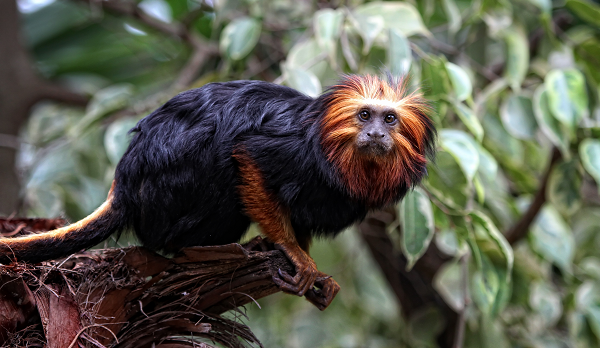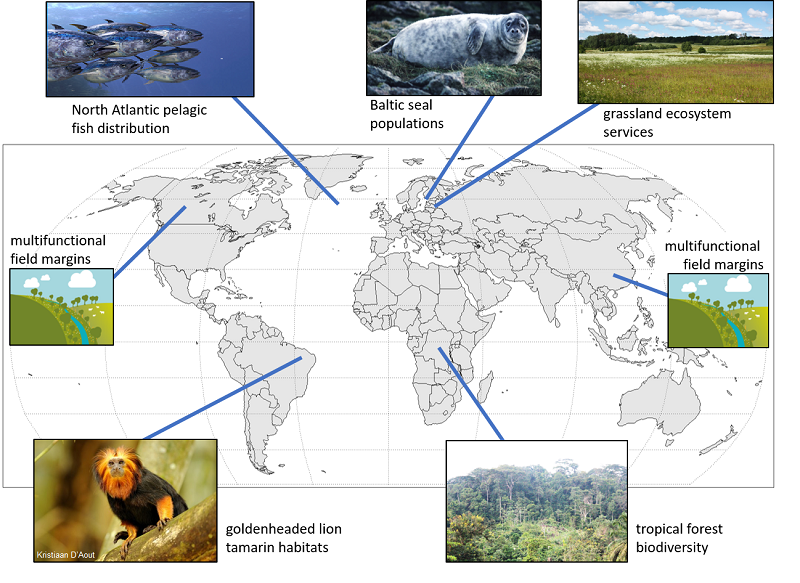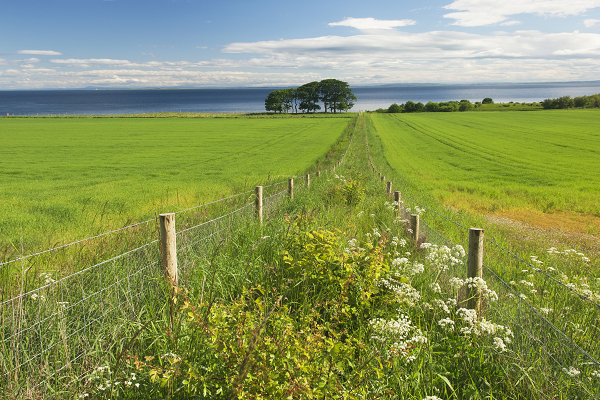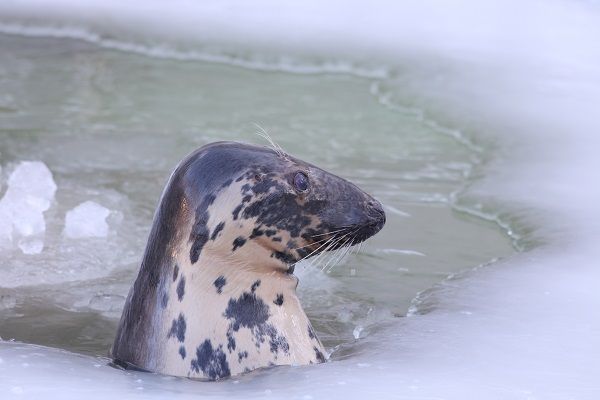As sea ice melts, Baltic Seals that give birth on sea ice may start risking their pups’ lives by delivering them on land where they are exposed to predators. As ocean temperatures rise, fish migrate poleward in search of cooler waters, impacting the livelihoods of fishermen. And as deforestation increases, we may find that some groups of golden-headed lion tamarin monkeys, separated into tree ‘islands’, adapt better to climate change than others.
Biodiversity – the amount of variety in life on Earth – is vital to the wellbeing of our planet, which is why the Copernicus Climate Change Service (C3S) is supporting a project to investigate how climate change will affect biodiversity worldwide.
Biodiversity includes not just animals but also plants, fungi and bacteria, all of which have an important role to play in the cycle of life on Earth. But climate change is affecting habitats, and species must adapt their behaviour to such changes or move to areas with more favourable conditions. Species that can’t adapt risk extinction, which has a knock-on effect on other species and ecosystem functions.
C3S, which is implemented by the European Centre for Medium-Range Weather Forecasts on behalf of the European Union, collects lots of data to monitor the climate and predict how it will change in the future. This information can be used to investigate how exactly climate change will impact various sectors.
Through the C3S Sectoral Information System, climate data is used to address specific problems. Biodiversity is the latest sector to be supported by C3S, in a two-year project led by the Flemish Institute for Technological Research (Vlaamse Instelling voor Technologisch Onderzoek, VITO). The project will focus not just on biodiversity but also on ‘ecosystem services’ that benefit humans, for example pollination and the replenishment of fish stocks.
“Managing issues like habitat change and changes in ecosystem services is often hindered by a lack of appropriate information regarding the past and future climate,” explains Koen De Ridder, Senior Researcher at VITO. “By providing bespoke indicators, we will address this lack of information to provide support to decision-making challenges.”
Together with six partners, VITO will produce an online platform containing data and tools tailored to the needs of the biodiversity and ecosystem services communities. Since the project kicked off on 1 March, the team working on the project have met with biodiversity and ecosystem experts, including researchers, private companies, nature conservation agencies, policy makers and plantation owners. VITO seeks to find out exactly what information these potential users of the platform need to help the natural world adapt to climate change.
To further ensure that the platform is as useful as possible, it will be developed, tested and demonstrated through six concrete use cases:
- Goldenheaded lion tamarins in Brazil
- Fish in the North Atlantic Ocean
- Grassland in Latvia
- Seal reproduction and habitat in the Baltic Sea
- Buffer zones at the edges of fields in China and Canada
- Tropical forests in Central Africa
These case studies cover both land and ocean, and each subject is affected by climate change differently; seals by melting sea ice, fish by warming oceans and grassland by changing soil moisture, for example. C3S provides information about all of these so-called ‘climate indicators’ on a variety of time scales.
“Different issues require different climate information,” continues De Ridder. “One interesting example that we’ve recently come across is a specific type of vulture that travels between Europe and Asia. Climate change may affect atmospheric currents, which in turn influence the flight of the vulture. To investigate this, the scientists would need information on wind speed and direction to see if the birds already rely on air currents.”
The team will convert raw climate data provided by C3S into more relevant information. For example, they could work out the number of days above or below a given temperature threshold as this could affect some plants more significantly than an annual average would.
“Apart from raising awareness of the impacts of climate change on biodiversity in general, the tailored information we provide will hopefully reduce the effects of climate change in specific areas,” says De Ridder. “For example, if we understand how exactly seals will be affected by melting sea ice, we can carefully plan the trajectories of ice breakers to avoid destroying the little that remains.”
Right now, deforestation and land use changes are the biggest causes of biodiversity loss, but there are clear signs that climate change is becoming a more instrumental factor. The United Nations Intergovernmental Science-Policy Platform on Biodiversity and Ecosystem Services recently released two reports which respectively concluded that climate change is increasingly a driver of change in nature and that the rate of species extinction is accelerating, with grave impacts on people around the world now likely.
“Climate change impacts many different sectors, including biodiversity,” concludes Samuel Almond, Sectoral Information System Officer at C3S. “Through this project, and others like it, we hope that decision makers can be more prepared for the future with access to climate information that is tailored to their specific needs.”






